A Room of One's Own - Chapters 5-6 Summary - Nailing Non-Fiction Series
Nailing Non-fiction Series - Virginia Woolf - A Room of One's Own | English
 13:30
13:30
Guide for Students
Sink your teeth into the world’s juiciest nonfiction texts! Our Nailing Nonfictions series takes the hard work out of analysing nonfiction so you can gobble it up.
Be captivated by the true stories and real struggles of people who’ve made an impact on our world. We’ll introduce you to their memoirs, essays, biographies, speeches and more using our plain-language commentary and cool visuals.
For each text, we offer lessons on:
• Chapter and overall plot summaries
• Context
• Five key themes
• Building body paragraphs
Each of our videos is a high-quality production, incorporating vibrant animations and helpful annotations to guide you through the text.
Before you get started, we recommend you check out the Nailing Nonfiction videos in our English Essentials series. You’ll learn about all the language forms and features composers use to sweeten their texts for your enjoyment.
Here’s how to get the most out of our videos:
1. Watch them before you start studying the text
Get ahead on your schoolwork! Watch our lessons in the holidays or a few weeks before studying your nonfiction text in class. Watch our plot summaries to get a sneak peek or learn about the context of the text.
Take notes as you watch each video. Draw up a timeline of events and create profiles of the key people mentioned in the text – especially the composer!
You can also watch our lessons on the five key themes in the text. Start unpacking the big ideas and developing your analytical skills.
2. While your class is studying the text
When you know you’ll be looking at a certain part or chapter of the text in class, check out our chapter summaries first! That way, it’ll be easier to remember the people and events the composer focuses on in that part of the text.
Check out our five videos on the key themes in the text! Watch these when your teacher starts handing out homework and assessment notifications. We’ll analyse lots of textual evidence, so you’ll encounter a range of language techniques.
If you need to revise a specific technique, you can always check out the Nailing Nonfiction videos in our English Essentials series. This series will give you a rundown of the techniques you need to know so you can have the competitive edge in the classroom!
Our English Essentials – Nailing Nonfiction series teaches you the secrets of nonfiction, including the:
• types of nonfiction – written, verbal and visual
• purpose of nonfiction texts
• structure of different nonfiction text types (like memoirs, essays and speeches)
• language techniques composers use (like analogies, statistics, rhetorical questions, direct quotations, anaphora, and colloquial language)
…and much more! We cover everything you need to know to master any nonfiction unit in high school!
What if you’re stuck on a theme or other aspect of the text after covering it in class? You can always watch our lessons to fill any gaps in your understanding. We recommend taking notes as you watch the video. Maybe you want to record specific quotes or add extra thoughts to the analysis. Create an analysis table of the quotes, techniques and links to context and themes!
You might even note down a question to raise with your teacher later on. No doubt your class will appreciate your contributions to open discussions now that you’ve got the advantage of our Nailing Nonfiction series!
3. When preparing for an assessment
Feel free to watch our videos to revise for upcoming assessments.
If you’re preparing to write an analytical response or essay, brush up on the key themes in the text. You’ll need them to tackle your school assessments.
But how do you turn your analysis into perfect paragraphs? Check out our two videos on Building Paragraphs. We transform our detailed analysis into structured paragraphs, guiding you through the steps of choosing evidence and placing it into a logical sequence.
Check to see if the series includes syllabus-specific analysis. For our users in New South Wales, we offer videos that show you how to analyse texts for the HSC Modules. We guide you through the analysis and show you how to link it to the key ideas in the rubric.
Guide for Educators
As educators, we’re always finding ways to help students become more independent learners. When it comes to studying nonfiction, students are often reluctant to engage in their own, rigorous analysis of it. While they enjoy the captivating stories of real people, there can sometimes be a disconnect when it comes applying the metalanguage of nonfiction.
Schooling Online seeks to support you in the amazing work you do every day. Our videos are designed to give students the confidence to actively engage in lessons and take control of their own learning.
Here’s how to get the most out of our videos:
1. Integrate our videos into your school’s English curriculum
Our online lessons cover a range of significant nonfiction texts. These include texts prescribed and recommended by the New South Wales Education Standards Authority. Our lessons are also valuable for the International Baccalaureate Diploma Programme and other secondary English syllabi.
We recommend that you integrate our videos into your lesson plans and teaching programs. This will add another meaningful resource to your arsenal and assist you in the complex, recursive process of teaching nonfiction. Our videos explain the key themes and contextual influences of each text. They also cultivate valuable skills needed for detailed analysis of language forms and features. Our vibrant animations and clear commentary will help your students meet their learning outcomes with ease and enjoyment.
Sign up your school with Schooling Online and set lessons for students to watch in class or at home.
2. Introducing students to a nonfiction text
We know that students struggle to pick apart the structural conventions, purpose and language techniques in nonfiction texts. So how can we help? Our English Essentials – Nailing Nonfiction series gives you detailed, rigorous teaching material and full flexibility. Depending on the skills you want to target and the level (or Stage) your students are at, the series will help them master the:
• Main purpose of nonfiction texts
• Types of nonfiction media – written, verbal and visual
• Structural conventions of different text types (e.g. essays, speeches, articles, opinion pieces, biographies, documentaries)
• Three rhetorical appeals (ethos, logos and pathos)
• Language features nonfiction composers use (e.g. anecdote, analogy, quantitative and qualitative examples, rhetorical questions, direct quotations, paraphrasing, hyperbole, anaphora, cause and effect logic, slippery slope fallacy, procatalepsis, colloquial language, connotation, ad hominem attack, parataxis, imperative, parenthetical aside, pace, pausing, register, modality, lampooning, raw footage, photographs)
The detail and complexity of our lessons increase for each level of secondary school (grades 7-8, 9-10, and 11-12). This allows you to cater for your students, whether it’s introducing them to nonfiction text types, consolidating prior learning or enhancing their skills in senior years.
For lengthy texts, such as memoirs and biographies, we offer chapter and overall summaries of the text. We also dedicate one lesson to introducing you to the composer and exploring the text’s context. This encourages greater understanding of the interconnectedness of life and art. Students can watch these videos before class or you can play them in class to introduce the people and key events in the text. You could use the videos to spark discussion, practise notetaking skills or as the basis for an in-class task.
Our videos make excellent, manageable items of homework. That way, class time can be reserved for robust discussion, group collaboration and writing tasks. Allocate our videos for home viewing to give students a strong foundation in the unit, greater independence and more confidence in the classroom.
3. Help students to critically analyse the text
Our videos equip students with the essential skills needed for analysing nonfiction texts. The principles of nonfiction writing are presented using engaging visuals and relatable examples.
For each text, we spend five lessons analysing key themes and relevant textual evidence. We show students how to identify structural forms and language features using a broad range of examples.
Not only will we teach your students how to analyse a nonfiction text, but we’ll also show them how to write critically and analytically about it. Over two additional lessons, we weave our analysis together and transform it into body paragraphs. We want to equip students with the vital tools for writing eloquent essays and extended responses.
For our users in New South Wales, we offer additional syllabus-specific videos. We demonstrate how to analyse the text through the conceptual lens of NESA’s unit descriptions.
Turn your classroom into an interactive learning environment by watching the videos in segments. For the videos we just mentioned, we recommend pausing the video after a new idea has been analysed. This is the perfect time to open discussion with your class, allocate some small group work, or set an individual writing task.
You can check your students’ understanding and actively engage them using these discussion/short response questions:
• How does the composer portray themselves or one other key person in the text?
• How does the composer establish and develop a specific theme?
• What message or values is the composer trying to convey?
• How does the composer portray a setting in the text?
• Where can you see the contextual influences in the text?
• How does the composer portray the relationship between certain people?
• How has the composer structured the text in a way that keeps you engaged?
• How does the composer use the conventions of essays/memoirs/speeches/articles etc to keep you engaged?
• Did the composer manipulate the structure of the text in any way? Why do you think they did that?
• Did you find the text engaging or relatable? Why/why not? How does your own context influence your reaction to the text?
Feel free to use our videos as resources for the following class activities. Students may:
• Compose a brief chapter or scene from another person’s point of view
• Compose a diary entry or letter from the perspective of one of the secondary or ‘silenced’ people in the text
• Make notes that follow key events in the text and plot them visually
• Create a movie poster for the text that captures its tone and atmosphere
• Compose an interview with the composer about the text and its contextual influences
• Compose a critic’s review of the text using persuasive language techniques
• Compose a multimedia trailer for a film version of the text incorporating sound, voice and image
• Compose a discursive piece that explores an important idea in the text and offers insight or a fresh perspective
• Engage in further research about the context of the text, including the composer’s personal & professional influences
• Create a summary of key quotes relating to a major theme
• Compose a paragraph or extended response analysing themes and values
The clear, conversational style of our voice-over is also a good example of discursive writing. Not only will your students benefit from the analysis offered in our videos, but they could also note down some of the discursive language techniques we use in our commentary. This is a valuable form of compound learning you can utilise if an upcoming assessment task involves a discursive piece.
4. Use our videos for internal and external assessment preparation
Our videos help students revise with ease and confidence!
We recommend playing the videos in class to refresh students’ understanding of the text. Alternatively, students can watch the lessons at home as part of a structured regime of revision. We’re just a click away!
We want students to go beyond rote-learning the material. Our videos help students understand each example through vibrant visuals and commentary. This will help them commit the content of the lesson to memory, which can be consolidated through revision and focussed writing.
Our videos help students to interpret texts in their own way, at their own pace. They can re-view our analysis as many times as they need to help them craft sophisticated thesis statements for their assessments.
Our videos can provide a basis for the following revision activities. Students may:
• Discuss how to approach an assessment task, such as how to structure an extended response
• Write practice paragraphs for peer assessment
• Create study notes with textual analysis on context, characters and themes
• Research and incorporate the contextual influences into their study notes
• Create study notes that link their analysis of the text to key terms in your English syllabus
This is the grand finale of Virginia Woolf’s famous essay A Room of One’s Own. Join us to find out how she brings all the strands of her argument together, and ends it with a poetic bang. What does Woolf see for the future of literature? Do female writers stand a chance? And how can we gear our minds towards great writing? It’s all here in this lesson!
Watch our summary of Chapters 5-6 of Virginia Woolf’s extended essay A Room of One’s Own to find out what happens.



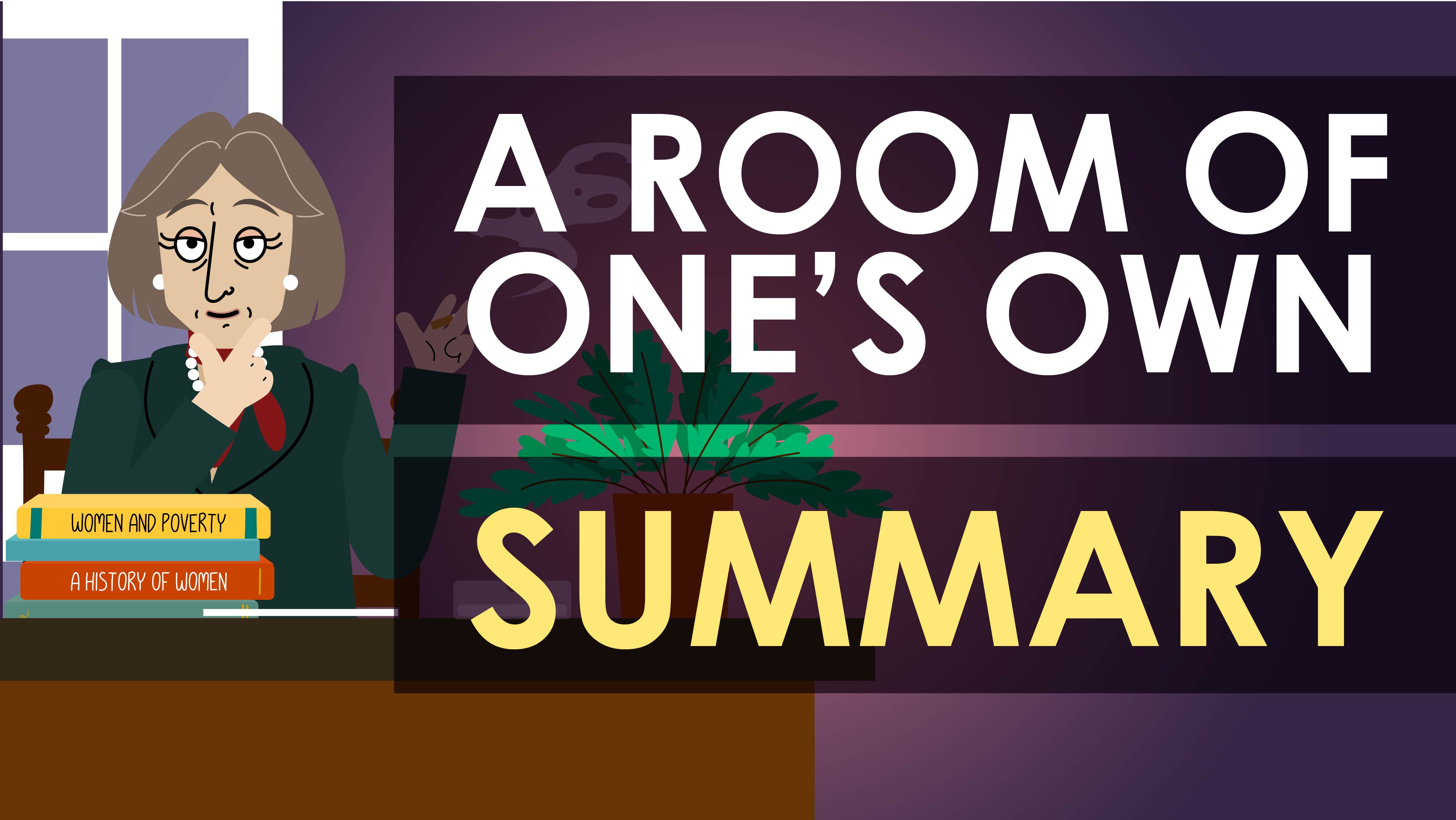
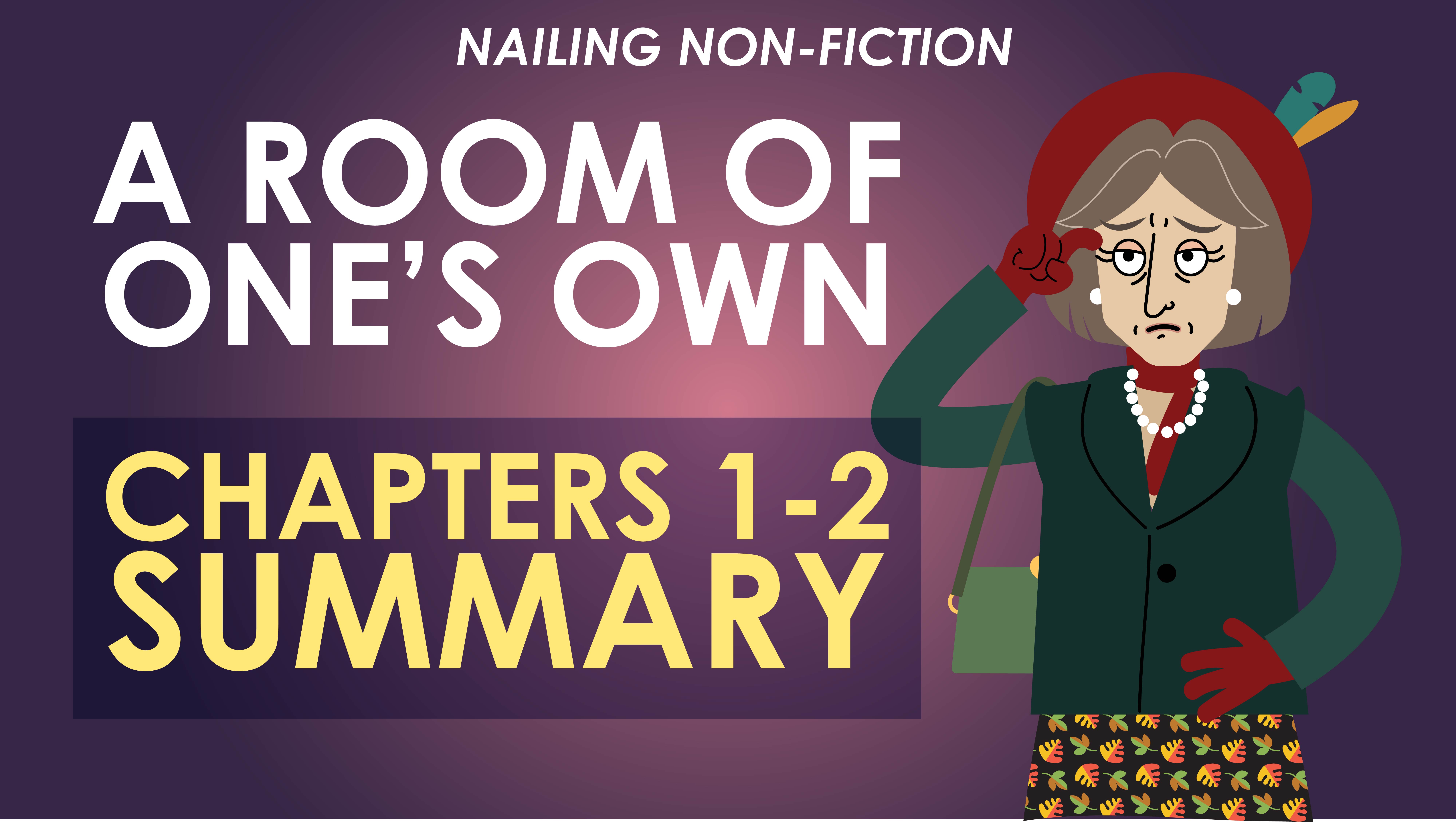
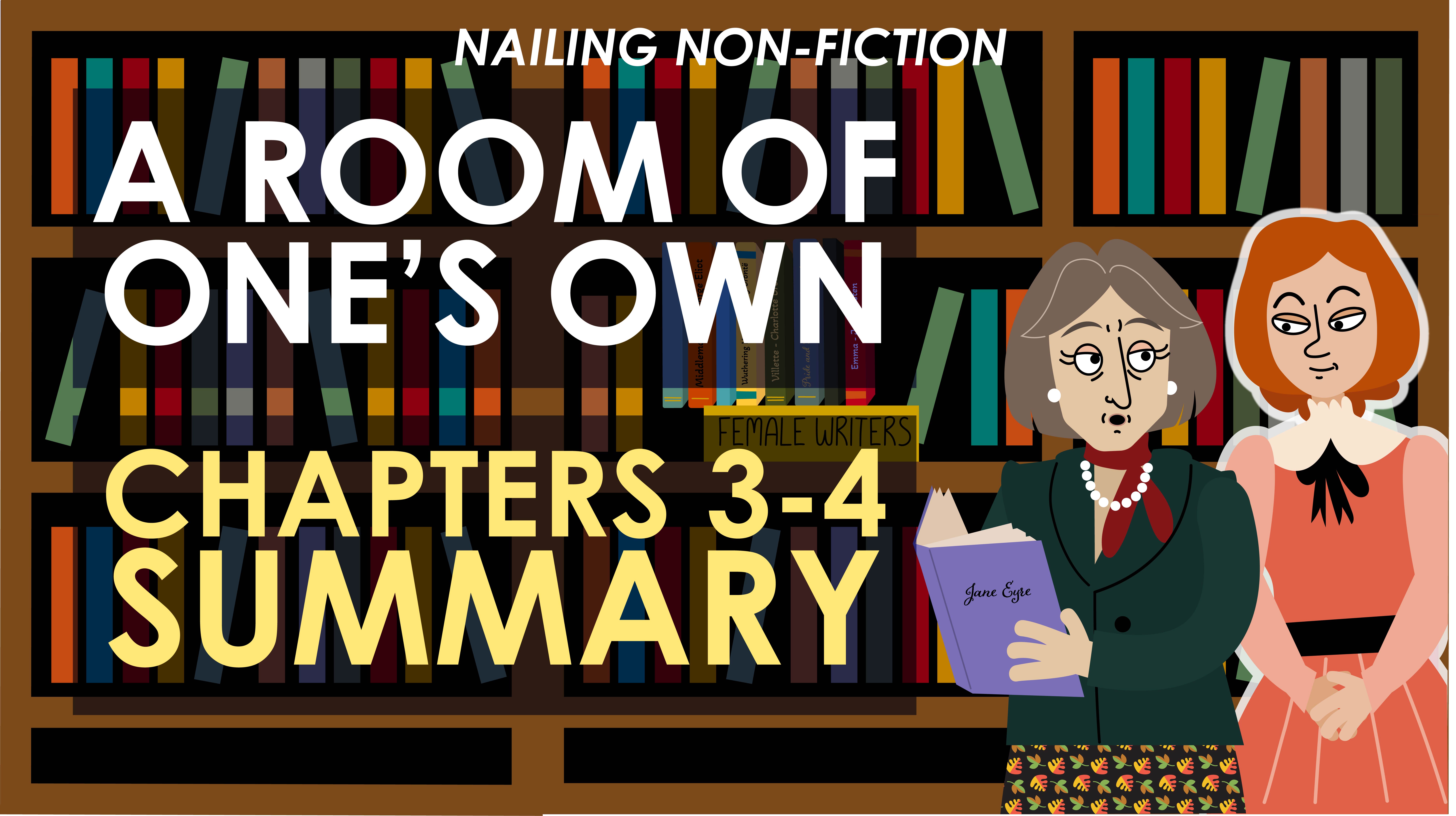
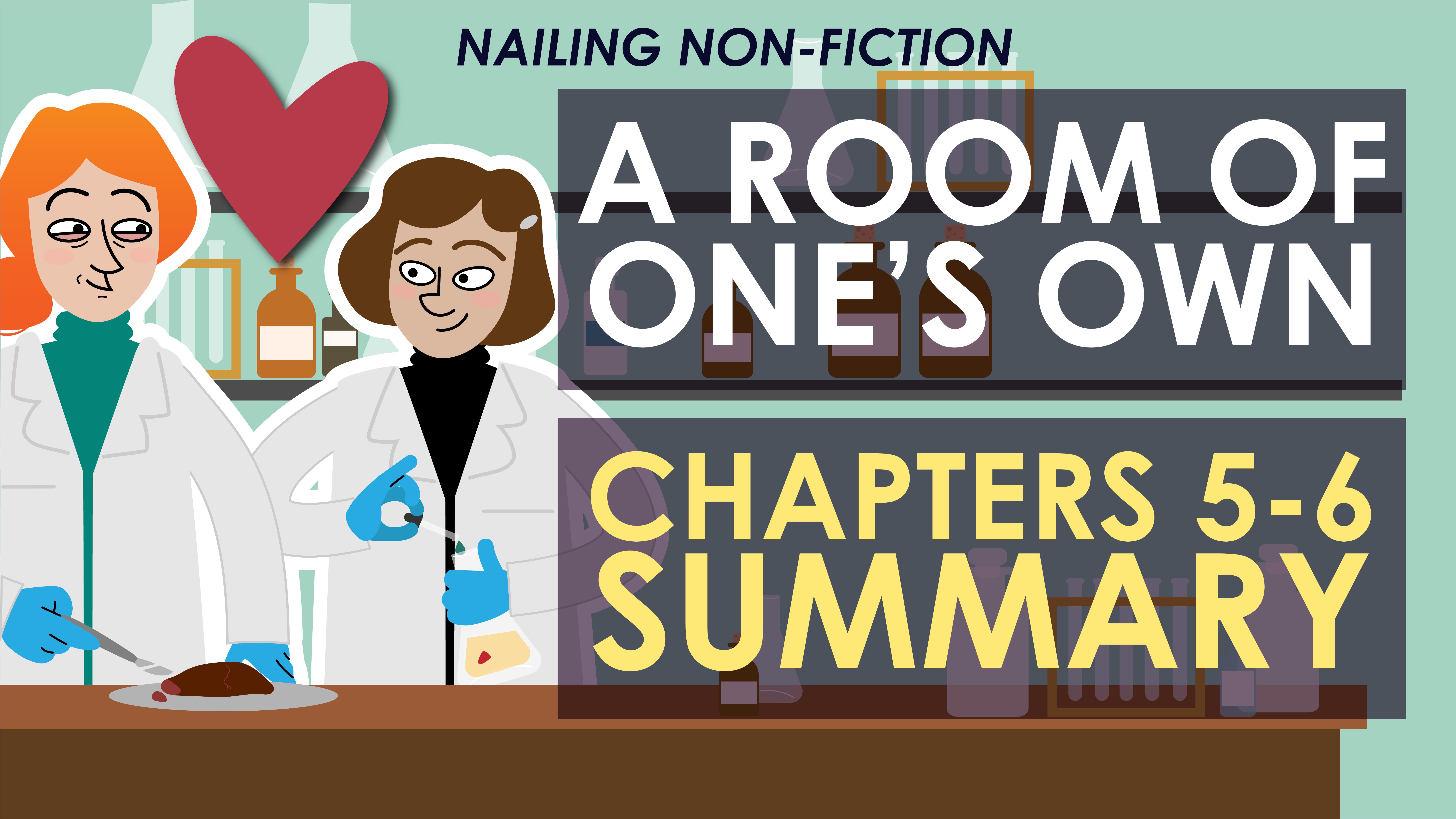
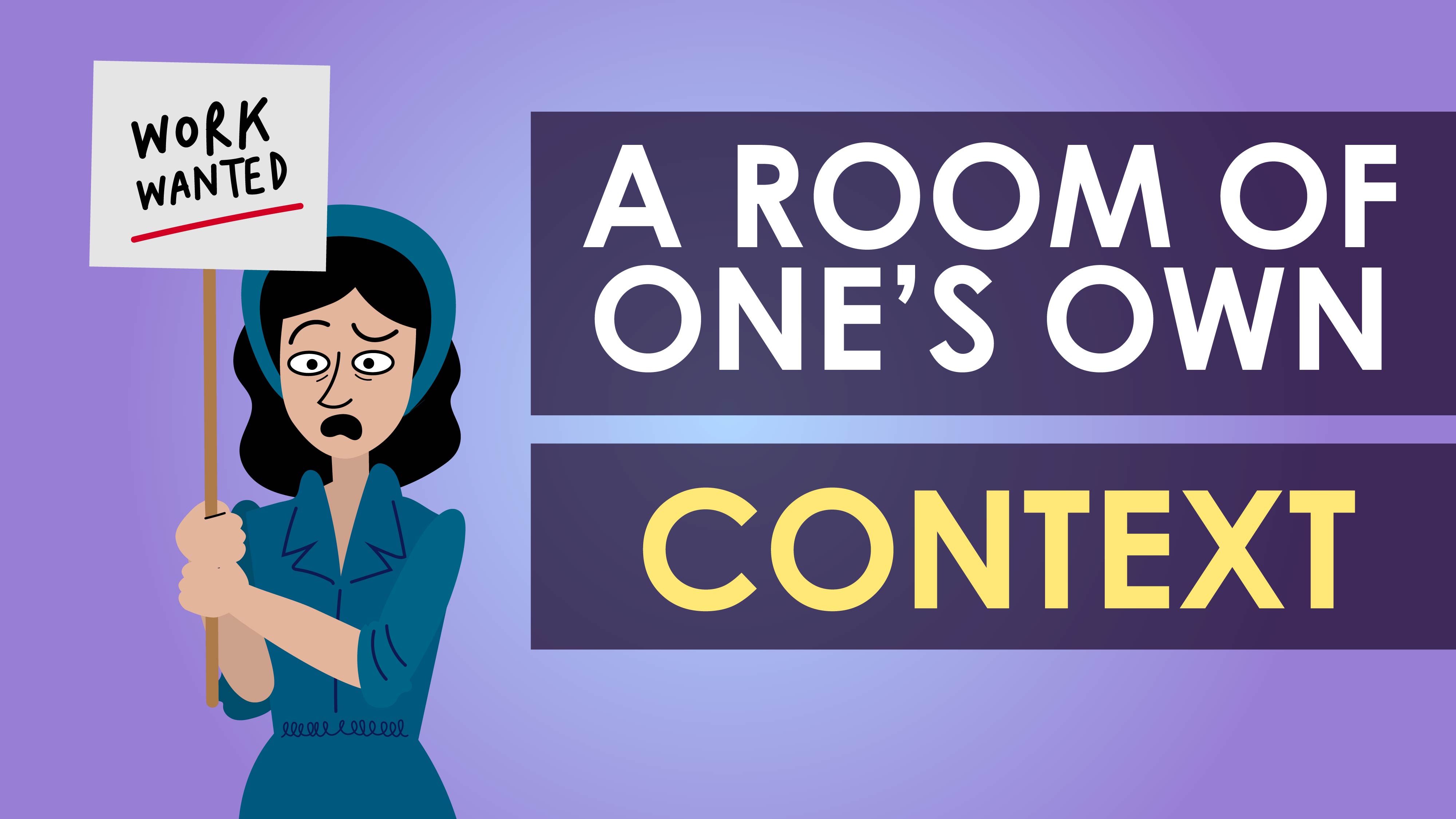
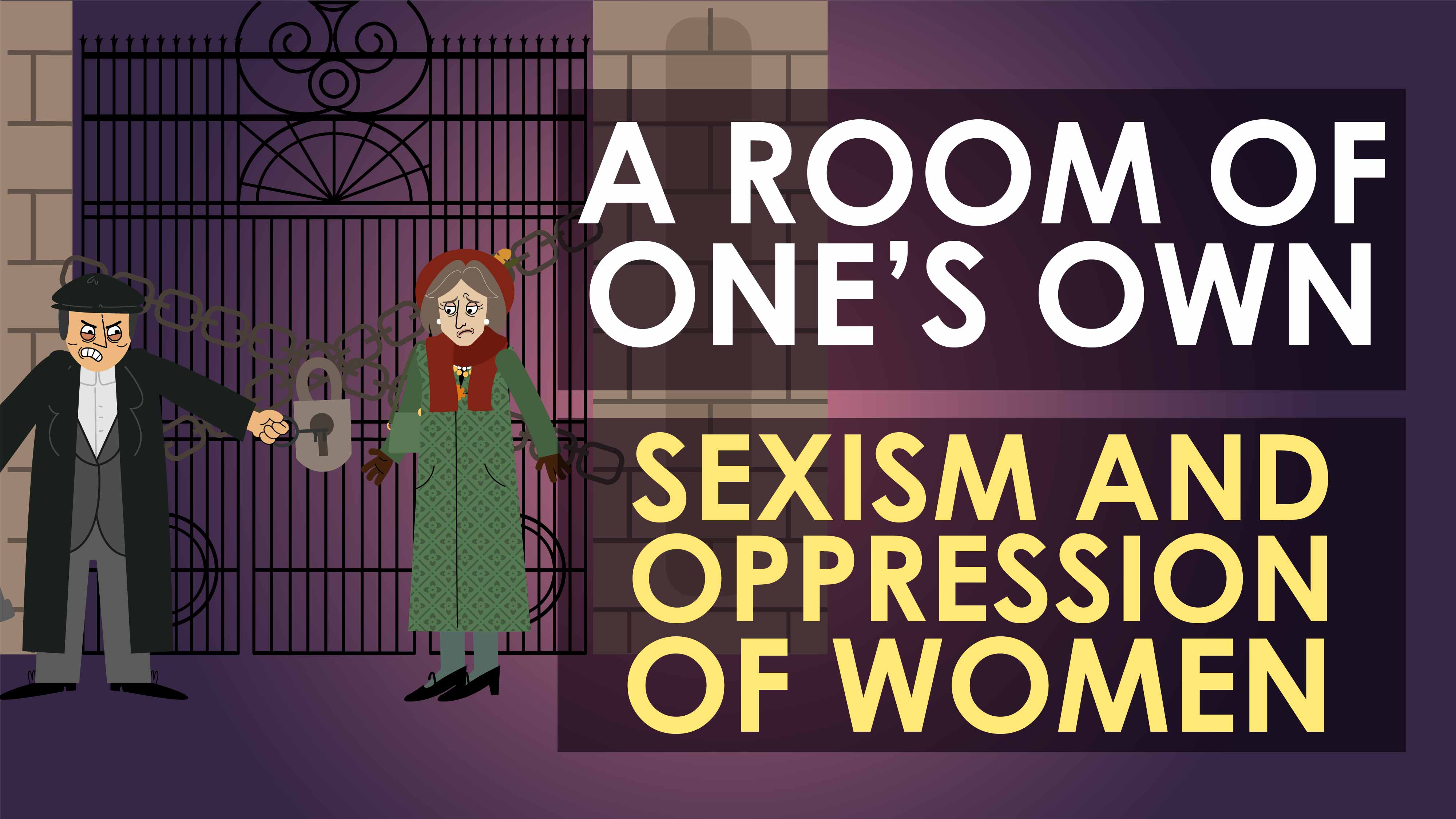
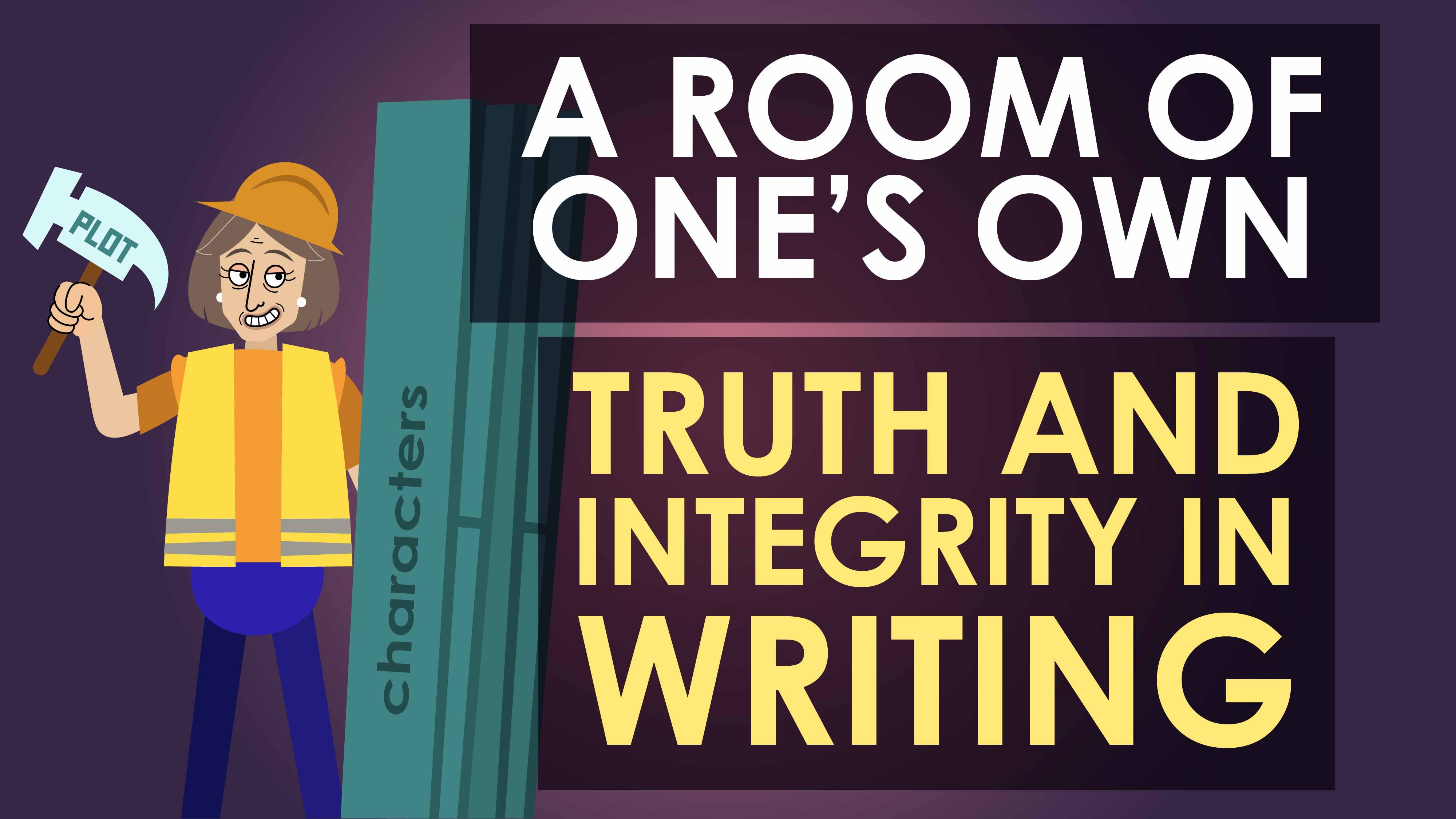
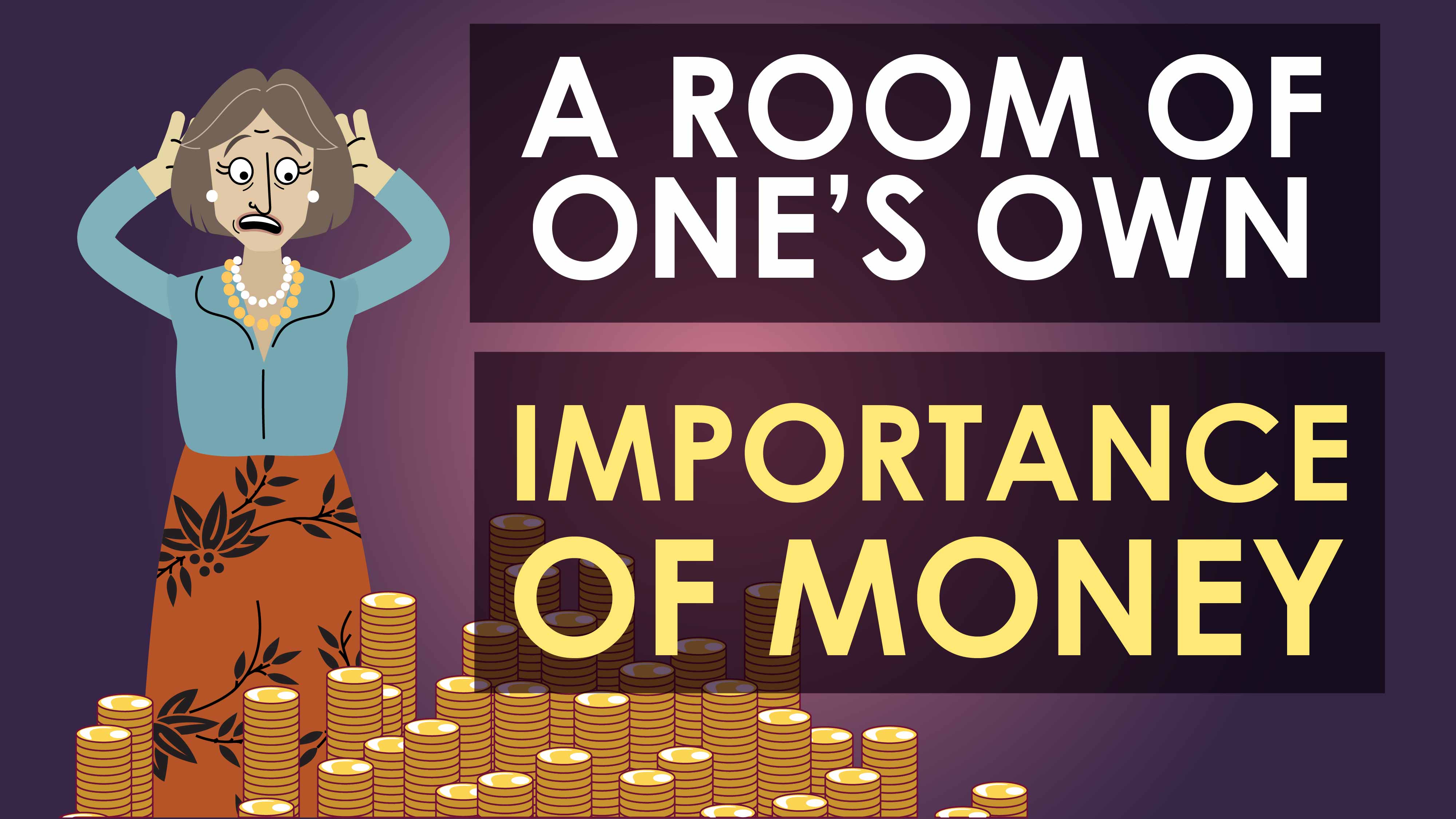
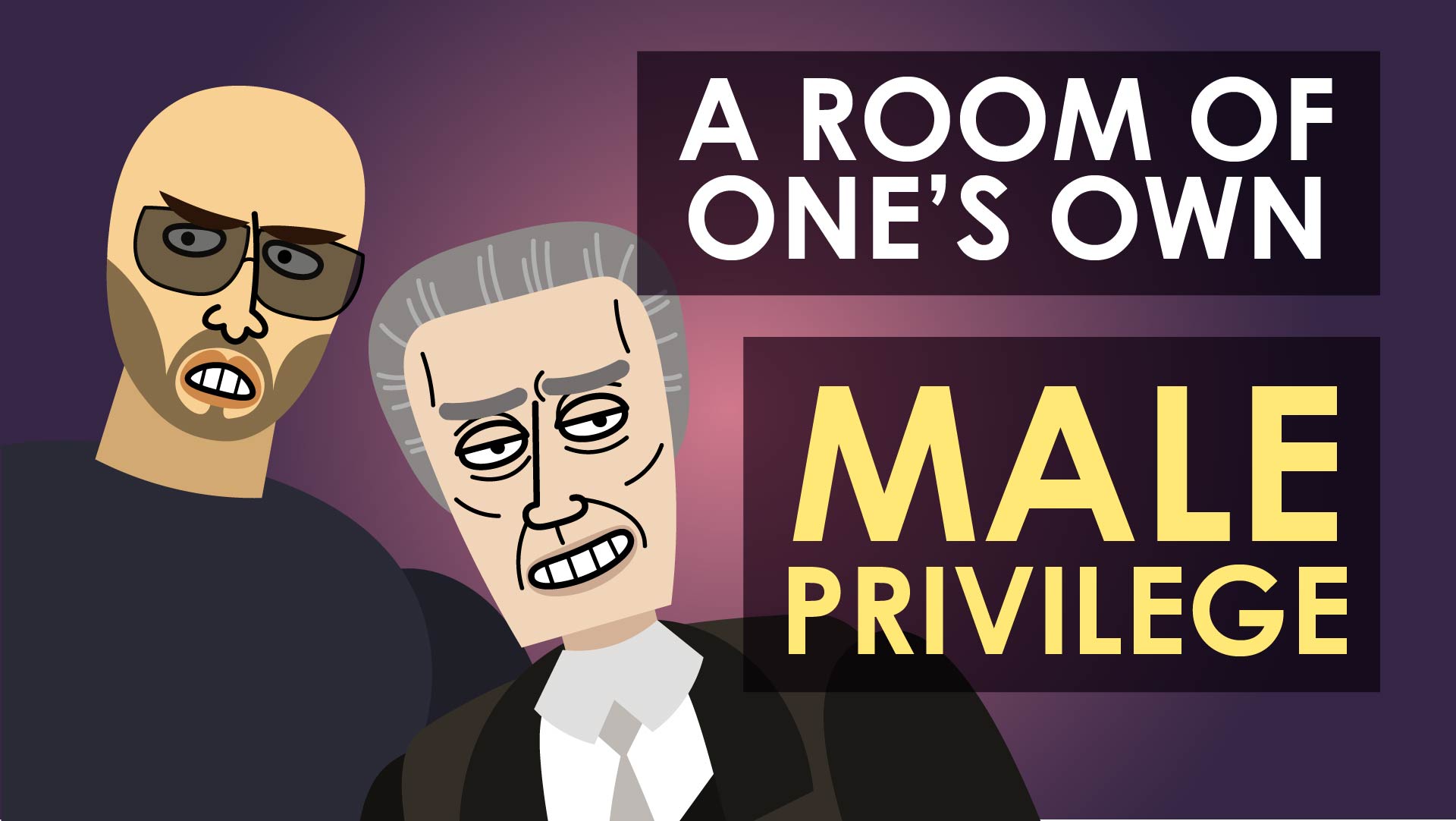
Share